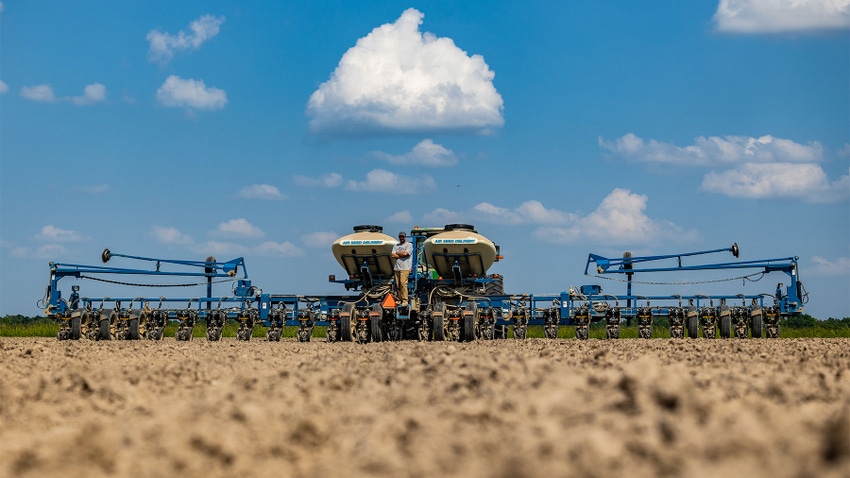February 1, 2024

Farm incomes are expected to decrease 90% for 2024 compared to the 2022 high, according to University of Illinois Farmdoc farm budget projections.
“It’s not the rosiest outlook in terms of returns and farm income, given where prices have been in the last six months,” says Nick Paulson, University of Illinois risk management economist. “We’re definitely headed into a much tighter-margin environment — so thinking about cost-cutting strategies or ways to manage through that is important.”
As commodity prices trend downward and production costs continue to increase, Paulson recommends the following considerations for farmers to adapt to a lower-income environment:
1. Inputs. Total input costs are projected to decline slightly, almost entirely due to decreased fertilizer prices.
Farmers should expect some relief on fertilizer compared to the previous years, as fertilizer expense recovers from global volatility due to the Russia-Ukraine conflict.
Seed and pesticide expenses will continue to increase in 2024. Pesticides have experienced the largest percentage increase in the last several years, with resistance leading to additional applications and higher rates. 2024 pesticide applications, particularly of fungicides, should be considered more carefully from an economic standpoint.
2. Power. Power costs are projected to increase. While capital purchases will likely adjust down, significant adjustments to machinery-related costs can be difficult to achieve in one year.
In the last few years, farm operation and machinery expenses have increased as farmers reinvested income into the farm. For 2024, machinery investment should be reevaluated as income decreases.
Identifying efficiencies in field operations, such as fewer tillage passes, could equate to a real financial benefit of $5 to $10 per acre in savings in 2024.
The bright spot with power costs is a relief in fuel expense, as diesel prices work their way down from record highs.
3. Overhead. Overhead costs are projected to increase as higher interest rates and labor challenges continue.
Since 2004, overhead costs have been on an upward trend, as it takes more capital and more borrowing to put a crop in.
Identifying reliable, skilled farm labor is a challenge across the country. Qualified farm labor is a higher expense now than at any other time in history.
Rising interest rates to battle inflation from the COVID-19 pandemic will continue to impact borrowing for the 2024 crop, with possible rate reductions expected in the last half of the year that could provide more relief in 2025.
4. Land. Land prices continue to hold at record highs, creating an environment where net farmer returns, particularly on cash rented land, will decrease significantly in 2024.
The cash rent environment will be challenging for 2024 as projected cash rent returns are negative. Given current projections, cash rent adjustments or variable cash rent leases should be considered to break even.
Planting soybeans is predicted to offer a moderate advantage over corn in 2024.
5. Risk management. Risk management should be a higher consideration for farmers in 2024 as margins tighten.
Consider a broader crop insurance plan or supplemental coverage options to insure higher percentages of lower expected revenues.
Although Agriculture Risk Coverage vs. Price Loss Coverage decisions were irrelevant in the last couple of years given high prices, more thought should be put into those decisions for 2024.
At press time there is no ad hoc support authorized for 2024, but there is possibility for federal support given potential $100-per-acre losses — although ad hoc support should never influence management decisions.
“The positive view is we’re pretty well positioned from a financial standpoint to potentially weather a storm here and give those production costs a few years to adjust,” Paulson says.
According to Farmdoc data, the farms best suited to ride out historical highs and lows practice:
cost control, particularly on capital purchases
knowledge about financial statements and organization, and breakeven costs
conservative marketing to take advantage of profitable sales opportunities while knowing that hitting market highs is nearly impossible
Paulson says it’s important to view farm incomes at a macro level, considering the decreased returns projected for 2024 take incomes closer to historical norms.
“Perspective is key,” he says. “You can get frustrated about the 2024 numbers, but we must keep in mind that 2022 isn’t a year we should expect as common. What we’re looking at for 2024 is more in the realm of what we would expect to be normal in terms of commodity price levels.”
Read more about:
Farm FinancesAbout the Author(s)
You May Also Like






